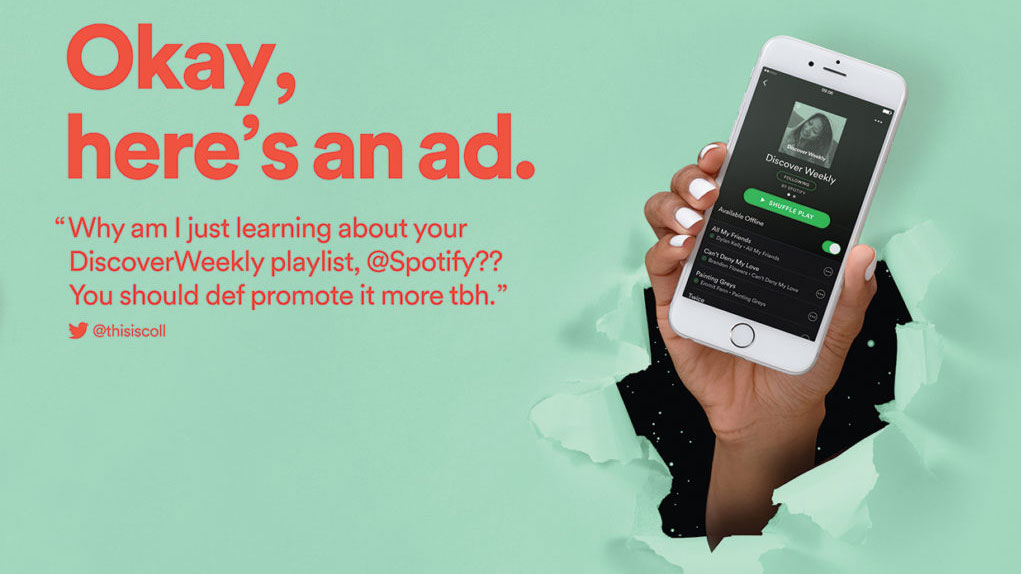
Brand voice can be a synonym for design-speak. If you open a set of brand guidelines and find the ‘brand voice’ or 'tone of voice' section (if there is one), chances are, you’re looking at one or two pages of broad, abstract principles – things like, 'We are HUMAN, STRAIGHTFORWARD, OPTIMISTIC and AUTHORITATIVE'.
Each principle probably has a brief explanation. There may be some ‘We are/We are not’ lists. Perhaps even a few short examples of ‘correct’ copy. And usually, that’s about it. (If you want to see how it's done properly, then make sure to check our favourite style guides.)
Now – do you have what you need to apply that tone of voice? Is it clear what sort of ‘HUMAN’ we mean? How to capture ‘OPTIMISTIC’ in words?
Probably not. Because ‘tone of voice’ or 'brand voice' is still treated in a pretty cursory way in most guidelines. Too often, ‘brand voice’ basically boils down to ‘less corporate/more friendly.’
That’s useful as far as it goes. But it’s a bit like buying a MacBook to play Solitaire. It does the job, but you’re leaving a vast well of potential untapped.
Why you need a strong brand voice
Happily, things are changing fast. Today, many brands are making smart use of language to create a competitive edge. (Think Monzo, Bulb, Slack, Spotify.)
So how do you get your own brand voice to work harder?
Get the Creative Bloq Newsletter
Daily design news, reviews, how-tos and more, as picked by the editors.
A good start is not calling it ‘tone of voice’. Tone – how you speak – is only half the story. What you say is just as important – if not more so. When you consider both sides together, you’re on the way to a genuinely transformative brand language. At Reed Words, we tend to use the term ‘verbal identity’.
And if that verbal identity is going to work, it has to be practical. Everyone who creates or manages copy for your brand needs to understand the specific elements of language that work for your brand. Otherwise, decisions are just subjective – the route to a fragmented and confusing brand.
Here's how to build your own unique and strong brand voice. Bear these five points in mind and you'll be laughing.
01. Be crystal clear on your message
Every brand has a long list of things it could say. And many fall into the trap of trying to say everything, all the time. You need a crystal-clear sense of the message at the heart of your brand – your proposition – and how that gets expressed to the world.
For example, a bank might be able to claim 150 years of heritage, three million customers, a 98 per cent TrustPilot rating, and carbon neutrality. But which of those should it focus on – if any?
Without a messaging strategy, it can’t answer that. Decisions become short-term, subjective and swayed by trends. Our fictional bank ends up running a half-cocked campaign about ‘relationships’, because dating and Love Island are hot topics. Then it crowbars in heritage and sustainability, because it can’t bear to leave them out. We’ve all seen ads like this.
If you’re clear on your message, you can stay focused. You can set about building a distinctive, persuasive idea of your brand, over the long term. (Think Nike. Think Apple.)
02. (Truly) understand your audience
If brand strategy drives your messaging, your audience guides it. To connect with them, you have to understand them – and shape your language to that understanding.
Often, this is where tone steps back in. Look at & Other Stories and Monki – two womenswear brands owned by H&M. Both have a young female market, but their voices are totally different. Look how each tackles the same simple message. First up, is & Other Stories:

And then we have Monki:

Of course, brands have multiple audiences, and many ways to reach them. That’s why a strong verbal identity often includes a ‘messaging matrix’ – a diagrammatic guide to what a brand should be saying, to whom, and how.
03. Keep an eye on the competition
‘Know your competitors’ sounds like basic advice, but how often do you see brands in the same space saying much the same things?
An effective verbal identity helps lift your brand above the fray, by finding fresh ways to address the audience. Spotify, for example, takes on the mighty Apple by talking about music entirely differently.
Apple sticks firmly to its positioning as the super-simple, monolithic power behind music (below).

Spotify can’t compete with that – and would be mad to try. Instead, it stays true to its message of socially-driven, people-powered music. ‘We’re one of you,’ it tells music fans – throwing Apple’s cold aloofness into sharp relief.

04. Get specific about brand personality
Spotify is a great example of a distinctive message, delivered in a distinctive tone.
That tone is born out of the brand personality – which you’ll no doubt find on another page of those guidelines we’re pretending you’re looking at.
But again, it’s not enough just to describe that personality. You need to explain what sort of language will capture it. Monzo’s guidelines do a good job of this. Monzo describe themselves as 'ambitious and positive' – and then give specifics on what that means:

A useful set of verbal identity guidelines will also include plenty of examples. And not just the big sexy ones.
05. Consider all touchpoints
Strong brands sound the same wherever you find them. Not just on billboards, homepages or TV, but in emails, error messages, and tweets.
When you get this right, the audience has the reassuring sense that they’re hearing the same voice every time. Their sense of the brand grows a little more. Basically, every word you put out is a marketing message – and should be treated like one.
Clothing brand Spoke have pretty much nailed this in their email newsletters. They even make jokes about copywriting:

On the flip side, neglecting these interactions, letting them slip into blandly corporate language (or worse), just undermines all the hard work you’re doing elsewhere.
Here’s a recent email from Ryanair, for instance. It conveys good news in such a confused, complicated way, you end up feeling worse about the brand, not better.

So that’s the recipe for a powerful verbal identity. Clearly defined messaging and tone, along with practical specifics about language. People need big ideas – but they also need the tools to put them into action.
Read more:

Thank you for reading 5 articles this month* Join now for unlimited access
Enjoy your first month for just £1 / $1 / €1
*Read 5 free articles per month without a subscription

Join now for unlimited access
Try first month for just £1 / $1 / €1
